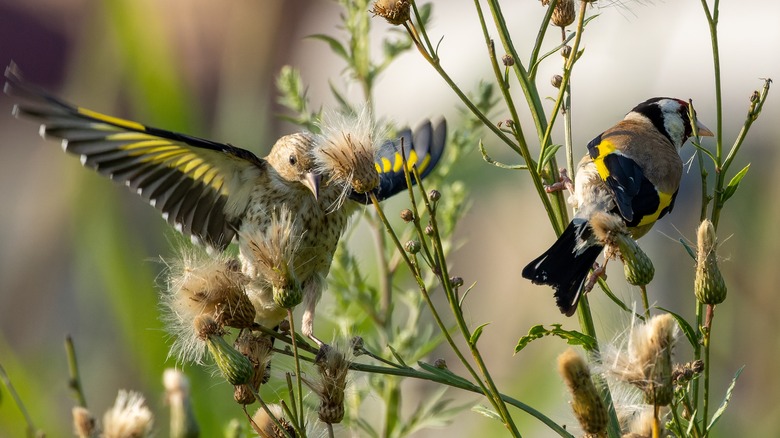Let Your Summer Plants Self-Seed In The Garden. Here's Why
Hands up if you're a gardener who loves growing stuff but isn't a fan of all the work. If that's you, what's the bet you're constantly seeking out ways to get the most plant payout for the least effort. You practice easy management techniques like chop-and-drop weeding, and a list of the best vegetables to grow if you're a lazy gardener is permanently magnetized to your fridge door. If you haven't explored the world of self-seeding greenery already, you're in for a treat! Letting your summer plants go to seed in the fall has numerous bonuses for backyard gardeners, including lower maintenance, more biodiversity, hardier plants, and greater sustainability.
What are self-seeding, also called self-sowing, plants? Essentially, it's the horticultural way of producing the next generation. Plants that flower and are pollinated by insects and other critters eventually produce seeds in pods or clusters on the same stalk the flower once grew. The parent plant employs various methods to disperse the seeds to soils near or far: some are blown away in the wind, others stick to passing animals or are eaten by birds and pooped out elsewhere. In some cases, the seeds simply fall to the ground. The seeds nestle into the soil, and when conditions are right, they germinate, producing a seedling and eventually a new plant. Some people call these often-unexpected garden visitors volunteers. Most commonly, annual and biennial plants produce seeds, but some ephemeral perennials do, too.
The positives (with a sprinkling of downsides) of letting plants self-sow
Since the seeds sow themselves, a self-seeding plant garden is more sustainable than its heavily cultivated counterpart. Letting seeds sprout in situ means fewer shopping trips or deliveries, reducing fossil-fueled transport miles. Since only the fittest survive, you're going to get hardier plants best suited to your specific plot of land, especially over successive generations. Depending on which self-sowers you let do their thing, you'll supply seed-eating birds and other critters with food in what's traditionally a leaner time of year. And, perhaps most importantly for nurturing a love of gardening, seeing what pops up and what survives from one season to the next is a lot of fun.
Take advantage of the surprise and wildness built into self-seeding plants to nurture your favorite garden styles. Design and plant the perfect cottage garden — the delightful messiness of this style is largely a result of embracing self-sowing. Quickly cover banks or blank spots in your yard with self-seeding ground covers. They're integral to the establishment of low-maintenance self-sufficient gardens and food forests, making them favorites of permaculturists. Use them to add structure to borders and blocks of color or texture in garden beds. Susan Hamilton, Director Emeritus of University of Tenneessee Gardens, says, "Another use can be in a meadow-type setting, an area where you let everything go to seed and just let things die down naturally, only mowing once or twice a year" (via HGTV).
Encouraging self-seeding in your garden is a blend of art and science
Instead of deadheading flowers or pulling out vegetable plants to make room for a new crop, let the blooms or ripe fruit go to seed. Gather the seed-filled stems or pods and scatter them across your beds. Thin out (and compost) seedlings as they pop up. To transplant a self-sown sapling, dig up and lift the plant out of the ground, taking some of the original soil with you. Once in a new location, water well. Avoid using heavy mulch or herbicides in your garden. Cultivate any volunteers that arrive in your garden by bird or breeze, too, but be aware some may be weeds or even invasive species. Learn to differentiate weed seedlings from useful plants, and pull unwanted greenery by hand so as not to disturb wanted plants.
If you don't have any self-seeding plants in your garden right now, you can add them yourself by buying plants or seeds. Some common self-seeding flowers that will effortlessly cover your backyard include borage (Borago officinalis) (also edible), cosmos (Cosmos bipinnatus), calendula or pot marigold (Calendula officinalis), forget-me-nots (Myosotis scorpioides), and hardy amaranth (Amaranthus cruentus). Lettuces, onions, pumpkins, nasturtium, dill, and even beets and carrots, if you're patient enough, are among the most popular labor-saving vegetables and herbs. Interested in experimenting with native self-sowers? Ask your local Cooperative Extension for advice on area-specific species to start with. (The University of Arkansas has a handy list of offices.)


